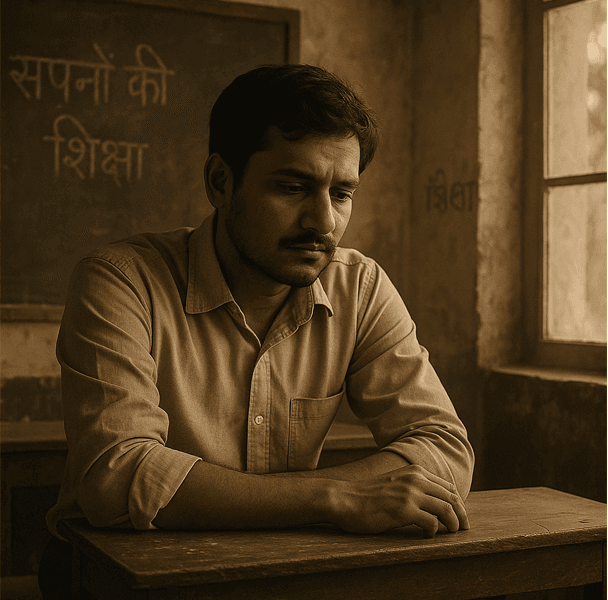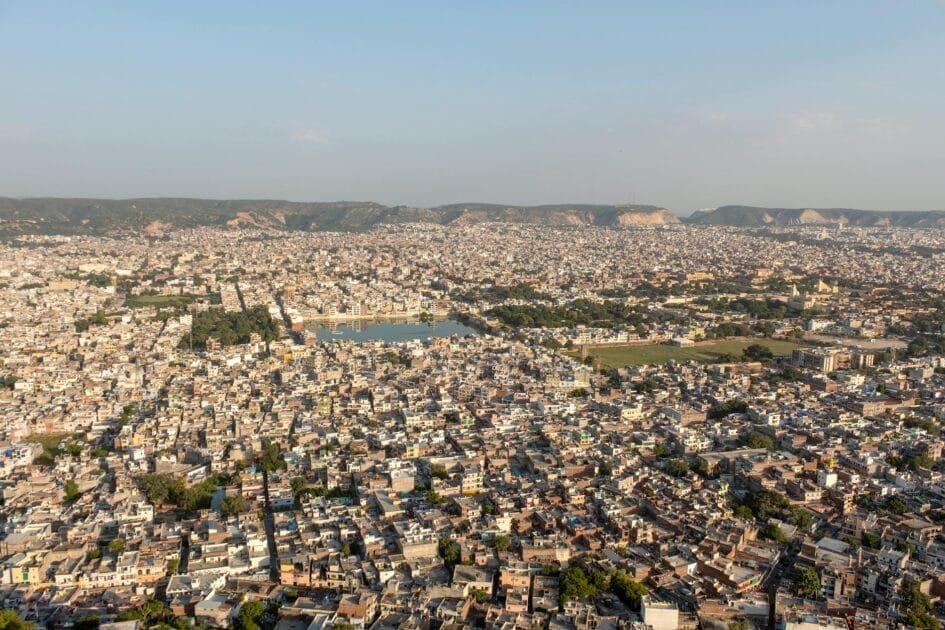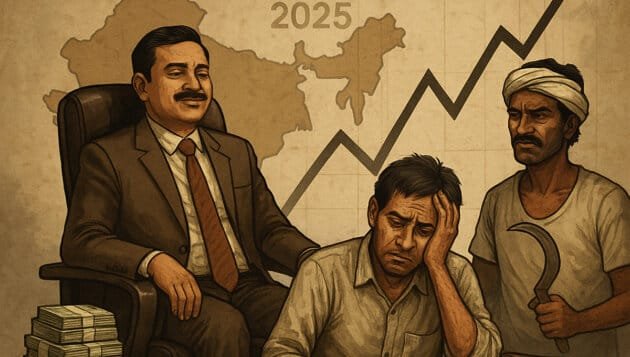The Basic Education Department in Uttar Pradesh operates under policy frameworks like the Right to Education (RTE) Act and the Sarva Shiksha Abhiyan. These government initiatives have established schools in every village panchayat for grades 1–5 and 6–8, aiming to deliver accessible and quality education to underprivileged and rural children.
But is this mission being accomplished on the ground?
Unfortunately, the answer is a clear “No”. Despite well-intentioned policies, the on-ground implementation has failed to live up to the promises. Disparities in teacher status, economic strain on educators, and lack of engagement from parents have together created a bleak picture for rural education.
1. Education Policy vs. Ground-Level Reality in Uttar Pradesh
The government has set up schools, appointed full-time teachers, Shiksha Mitras (para-teachers), instructors, and even cooks for mid-day meals. On paper, it’s an ideal setup. But in practice:
- There is a serious lack of awareness about education among students and their families.
- Most rural households are trapped in poverty and daily struggles, making school attendance symbolic rather than meaningful.
- Parents often send their children to school for the mid-day meal, without concern for their academic growth.
This disconnect between policy and practice results in alarmingly poor educational outcomes. Government surveys repeatedly highlight that a majority of students in Grade 5 cannot read a Grade 2-level textbook or perform basic arithmetic. Children are promoted from class to class without truly learning the fundamentals.
The result? Basic education standards continue to decline, endangering the future of countless children in rural India.
2. Government Teachers, Shiksha Mitras, and Contractual Instructors: The Human Cost
Government Teachers: Despite earning between ₹70,000 to ₹1,25,000 per month, full-time government teachers face constant pressure from administrative duties, outdated pension policies, compliance documentation, and mid-day meal management. Many are transferred frequently or marked as surplus, forcing them to work in unfamiliar environments far from home. This diverts focus from classroom teaching and discourages sincere efforts.
Shiksha Mitras: After more than 25 years of service in teaching classes 1–5, Shiksha Mitras still receive only ₹10,000 per month (unchanged for the past 8 years; previously only ₹3,500). They dedicate their lives to education but live in poverty, social neglect, and institutional apathy. Their services are considered temporary, even though they’ve spent decades teaching rural children without adequate recognition, job security, or benefits.
Their families suffer due to this chronic underpayment. Health expenses, education for their own children, and household needs remain unmet. Many have borrowed loans, and a few have even reported falling into depression due to professional uncertainty.
Contractual Instructors (Anudeshak): These instructors teach classes 6–8 and go beyond traditional curriculum — offering physical education, art, agriculture, home science, and computer literacy to foster holistic child development. In many schools, they are the only link to modern and vocational skills for rural children.
However:
- They’ve remained on temporary contracts for over 12 years.
- Their monthly honorarium was ₹7,000, later raised to ₹9,000 over 5 years ago — and hasn’t increased since.
- Their pay is inadequate for basic survival, let alone supporting a family.
They face:
- Financial instability and personal debt
- Social exploitation and humiliation, especially when compared to permanent staff
- Fear of administrative or political retaliation if they raise their voices
They exist in a limbo — overburdened like full-time teachers, but treated like disposable workers. Despite their critical contribution to education, they lack identity cards, health insurance, leave benefits, or avenues for promotion.
How can a teacher inspire learning while struggling to survive?
Many Anudeshaks have to work part-time jobs, such as tuition centers, farm labor, or even small retail work to sustain their families. This leads to physical and mental exhaustion, further affecting their performance in school.
3. Administrative Neglect and Political Tokenism
Every election season, political parties promise to regularize Shiksha Mitras and instructors. But after the votes are counted, these promises vanish. Teachers who speak up risk suppression, harassment, or being labeled anti-national. This reflects deep cracks in both democratic accountability and the state of basic education.
The bureaucratic machinery seems more focused on documentation than on outcomes. Officers demand data, attendance, and mid-day meal records, but seldom evaluate actual teaching. Teachers are often forced to attend non-academic duties, such as election surveys, census work, and training sessions that consume valuable teaching hours.
This administrative burden disincentivizes committed teaching, making the system perform poorly despite massive investment.
4. The Overlooked Crisis of Rural Children and Educational Neglect
In rural homes, children’s futures are overshadowed by poverty and illiteracy. Parents, overwhelmed by financial stress, often treat schooling as a formality. Many remain unaware or indifferent to what their children are actually learning — or not learning — in school.
The literacy rate in many UP districts still lags behind national averages. Girl students face additional challenges due to early marriage, household responsibilities, and unsafe school environments. Without support from family and community, their chances of academic success diminish.
Seasonal migration of parents also disrupts children’s education. Instructors and teachers report that many students leave mid-session and rejoin after months, having forgotten basic concepts.
5. Real Solutions for the Basic Education Crisis in Uttar Pradesh
The answers lie in both systemic reforms and collective awareness:
Government Must:
- Regularize and fairly compensate Shiksha Mitras and instructors.
- Streamline administrative processes and prioritize real teaching.
- Provide schools with essential infrastructure: digital tools, clean toilets, and libraries.
- Implement transparent transfer and promotion policies.
- Recognize and reward dedicated educators through career progression.
Society Must:
- Engage with children’s education.
- Encourage schooling as a long-term solution to poverty.
- Respect the roles of Shiksha Mitras and instructors as integral to the community.
Teachers Must:
- Stay committed to their mission despite hardships.
- Organize collectively to demand rights and recognition.
- Reconnect with students and bring creativity back into teaching methods.
Uttar Pradesh’s basic education system was meant to uplift rural and poor children. But today, it’s crumbling under policy failure, poverty, and neglect. A better future is possible — if the government, educators, and families align with the core values of equitable and meaningful education.
Empowering teachers, holding governments accountable, and involving communities are the foundational steps to reforming rural education.
“An educated child is not just a hope for one family or village — they have the power to transform the destiny of an entire nation.”
Let us remember: investment in basic education is not just a moral imperative, but a strategic one. A strong nation is built on strong foundations — and primary education is the cornerstone.



